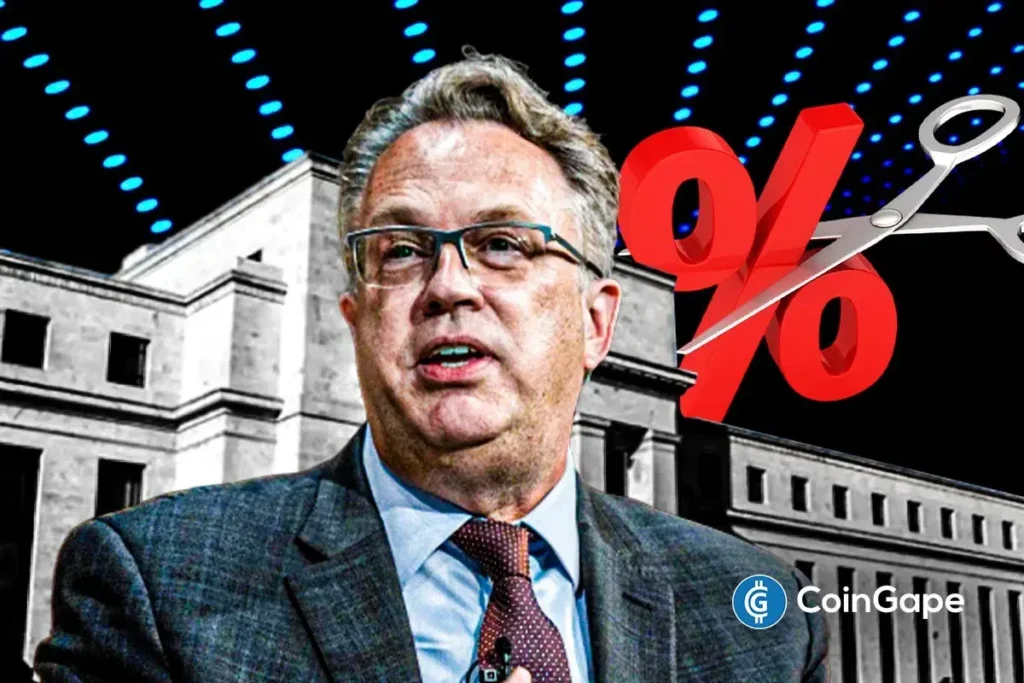The Path Ahead: John Williams Advocates for Fed Rate Cuts Amid Labor Market Concerns
In a recent interview, John Williams, the President of the New York Fed, expressed strong support for additional Federal Reserve rate cuts this year. Williams highlighted the current state of the labor market, noting its deterioration as a pressing priority over burgeoning inflation risks. This stance aligns with broader market sentiment, particularly in the cryptocurrency sector, where expectations for rate cuts have fueled a significant rally, catapulting Bitcoin to unprecedented heights.
Williams’ assertion during a New York Times interview signals a pivotal shift in the Fed’s approach. While he did not specify the exact number of cuts anticipated, he conveyed a clear inclination toward rate reductions, contingent on forthcoming data. This perspective mirrors insights from the recent Federal Open Market Committee (FOMC) minutes, which indicated a consensus among key officials on the necessity of rate cuts due to the labor market’s weakness. The initial cut earlier this year was directly prompted by disappointing employment data, underscoring the Fed’s responsiveness to economic signals.
Prioritizing the Labor Market Over Inflation
Williams’ focus on the labor market amidst prevailing inflation concerns has sparked an intriguing debate within economic circles. Although overall inflation remains elevated above the Fed’s 2% target, there are signs of underlying stability as inflation metrics inch closer to the goal. Contrarily, Williams pointed out that the labor market has notably cooled, warranting further scrutiny and potential interventions from the Fed.
This cautious approach resonates with the sentiments of other Fed officials, including Governors Michelle Bowman and Stephen Miran. Both have emphasized the importance of prioritizing labor market health over inflationary pressures. Miran, in particular, has expressed a more optimistic outlook regarding inflation while advocating for methodical rate cuts to foster growth in employment—an idea that aligns with Williams’ recent commentary.
Market Reactions and Expectations
As Williams advocates for a reduction in interest rates, the financial markets reflect anticipation and optimism. According to CME FedWatch data, there is a striking 94.6% likelihood of a 25-basis-point cut during the upcoming Federal Reserve meeting on October 29. Additionally, there’s a notable 79.8% probability for another cut of the same magnitude at the December 10 FOMC meeting. This data underscores the market’s confidence in the Fed’s shift towards a more accommodative monetary policy aimed at supporting employment.
Such expectations have invigorated the cryptocurrency market, where a rally led by Bitcoin has captured widespread attention. With the crypto community keenly attuned to macroeconomic shifts, the prospect of lower interest rates is being seen as a catalyst for increased investment and speculative activity. This alignment of market trends and Fed policy indicates an evolving landscape where both traditional and digital assets are influenced by central bank decisions.
The Broader Economic Landscape
The Fed’s consideration of labor market dynamics juxtaposed with inflation risks presents significant implications for the U.S. economy. By potentially lowering interest rates, the Federal Reserve aims to stimulate economic activity, encouraging borrowing and spending, which are crucial elements for job creation and sustaining consumer confidence. However, this course of action also raises important questions about how to balance economic growth with maintaining inflation targets.
In the context of the broader economy, this delicate balance is paramount. Prolonged periods of low interest rates could contribute to higher inflation if not carefully managed. Therefore, the Fed’s navigation through these turbulent economic waters requires keen monitoring of labor indicators and inflation trends to make informed decisions.
Enhanced Scrutiny of Economic Data
As the Fed gears up for potential rate cuts, the emphasis on economic data intensifies. The path ahead is fraught with challenges, making the accuracy and timeliness of economic indicators crucial. The labor market’s condition, characterized by recent slowdowns in job growth, remains a linchpin for policymakers. Fed officials are increasingly acknowledging that overlooking labor market signals could lead to missteps in monetary policy that could impact not only inflation but also overall economic stability.
Consequently, the Federal Reserve’s approach may require not just quick reactions but also a strategic, data-driven framework to gauge labor market health and inflationary pressures. This reliance on robust economic data becomes essential for making informed decisions that can shape the economic trajectory in the coming months.
Conclusion: A Crucial Moment for the Fed
As John Williams advocates for more Fed rate cuts in light of labor market concerns, the implications extend beyond traditional economic paradigms. This moment represents a crucial juncture for the Federal Reserve, as its decisions are poised to significantly affect the macroeconomic landscape. With the cryptocurrency market reacting favorably to potential rate cuts, the interconnectedness of these financial realms becomes increasingly evident.
In conclusion, the Fed’s future decisions concerning interest rates will largely hinge on the evolving labor market dynamics and inflationary indicators. As policymakers carefully navigate these challenges, their actions will not only impact the economy but also resonate through various financial markets, shaping the investment landscape for years to come.
















